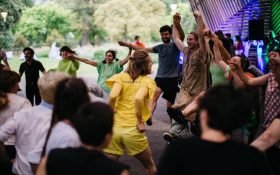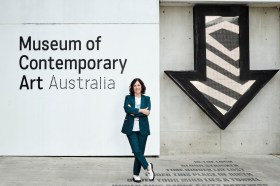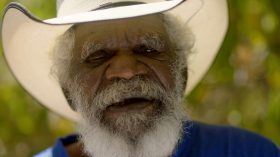Image: steadystrength.com
The relationship between art and commerce has often been rocky. Opinions swing radically from the school of thought that artistic integrity is the sole driver of art, with freedom and original expression paramount. Conversely, we have the Andy Warhols of the world who believe, ‘Making money is art and working is art and good business is the best art.’
Artist initiative Slow Art Collective aims to break out of the eternal struggle by creating an ‘alternative framework apart from the existing [economic] art market system’.
Established in 2009, the collective focuses on the sustainability of the environment and the quality of life. From exhibiting in a McDonalds drive-through to the National Gallery of Victoria for the popular Melbourne Now exhibition, it’s art with a difference: nothing is for sale.
Currently comprised of founding artist Chaco Kato, alongside Tony Adams and Dylan Martorel, the flexible artist collective is a shift from the traditional model of placing art in a gallery to create a profit. Instead, the slow art movement is about creating art which doesn’t rush toward money or economic success.
Dylan Martorel explained to ArtsHub, ‘What we are trying to sell isn’t money, it is something that happens slower than the transaction of money.’ Essentially, what the movement aims to promote is art ‘which appeals to the wider society as an essential part of life,’ and diminish the emphasis on financial success.
Adopting some of the principles of the Slow Food Movement, slow art doesn’t mean that the art-making process or exhibition is created at a snail’s pace – in fact some of the collective’s exhibitions are creating over the space of one weekend – but the surrounding frameworks are slower, more considered.
A guiding principal of the Slow Art Collective is to create ‘art that is not just ‘slow’ in speed, but in geological time … as evolution through renovation and transformation towards to our future society.’
How is this transformation made? A key aspect of the movement is about participation and fostering genuine relationships. The Collective describes this approach as ‘Art which develops horizontally rather than vertically by slowly circulating and connecting from place to place, people to people.’
The Slow Art Collective believes building a flexible community is essential to break the mould and allow the movement to grow. ‘For each project, it will be different people and their ideas which will help grow the collectively. Rather than being fixed on any one idea of what it should be or who should be involved, flexibility is the strongest strength of the collective,’ said Martorel.
Slow art picks up speed
Swapping fast paced auction sales for creative sustainability, recycled materials and community relationships, art is slowing down and stripping back to basics.
4 Dec 2014
[This is archived content and may not display in the originally intended format.]





